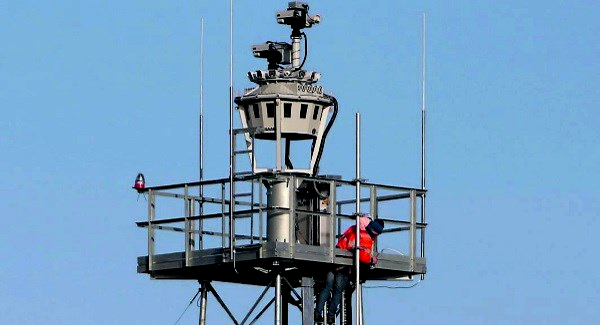If all goes well, Sweden-headquartered SAAB India Technologies is likely to start in the next few months the trial project that involves remotely monitoring traffic at four airports via a central location in Ahmedabad, Gujarat.
Airport Authority of India (AAI), which controls most of the civil aviation airports in the country, recently signed a memorandum of understanding (MoU) with SAAB for implementation of cost-effective air traffic management solution for airports listed under UDAN scheme and contingency air traffic management solution at major airports through a digital tower.
UDAN (Ude Desh ka Aam Naagrik) or Regional Connectivity Scheme is aimed at making air travel affordable and widespread.
“The MoU highlights the efforts of AAI focusing on addressing the challenges of aviation growth and enabling the ‘Flying for All’ vision of India,” AAI said in a statement.
Speaking to DNA Money on the sidelines of an industry event last month, Varun Vijay Singh, marketing director (Air Defence and ATM), SAAB India, said, “(In) Ahmedabad, where pilot project will soon happen, we will control four airports there… Surat, Bhavnagar and few others.”
AAI officials believe that remote towers, with their cost-effectiveness and lesser manpower, will be able to bring down air traffic management cost for the airlines by about 30%, which in turn, may get passed on to the end-flyers in form of cheaper fares. The remote towers are designed to monitor the air traffic of airports across the country from just one or a couple of locations. Few of the countries in Europe have placed a similar system for their airports.
Interestingly, remote air traffic controls are just one of the frugal option that AAI is trying out at the moment. Three years ago, the authority had decided that it will deploy mobile towers at these smaller, new airports as these are significantly cheaper as compared to conventional towers.
The development comes at a time when India is constructing or refurbishing 100 airports as part of UDAN scheme, wherein the airfares are capped at Rs 2,500 for certain allotted seats on a flight.
However, certain sections of AAI are of the view that it is still too premature to completely go for remote towers, as the organisation is already working on a massive upper airspace (altitude of over 25,000 feet) harmonisation. The flights flying in East and South of India are already getting monitored from Kolkata and Chennai. The work on developing a similar system in Delhi is likely to get completed in over a year and then in another two-three years for Mumbai.
Further, the plan is to withdraw central monitoring from Chennai and Kolkata and have the entire Indian airspace manned from only two centres – Delhi and Mumbai, sources said.
A similar harmonisation for lower airspace will start taking place after that, the sources added.
CHEAP UDAN
- Remote towers will be able to bring down air traffic management cost for the airlines by about 30%
- This, in turn, may get passed on to the end-flyers in form of cheaper fares
- The plan is to eventually have the Indian airspace manned from only two centres – Delhi and Mumbai
Source:DNAIndia
Image Courtesy: Irish Examiner
You may also like
-
Trade Connect E-platform For Exports Is Single Window, Fast, Accessible And Transformational: Shri Piyush Goyal
-
Dot Simplifies Approval Processes For Telecom Licenses And Wireless Equipment
-
Coal Production and Supply Trends on Positive Trajectory
-
Union Minister To Release Booklets On Promotion Of Indigenous Species & Conservation Of States Fishes
-
2nd India-Japan Finance Dialogue held in Tokyo on 6th September, 2024
